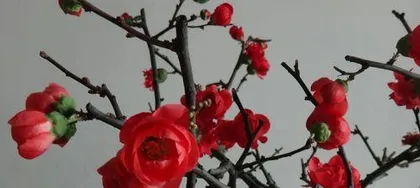Begonia is a common ornamental plant whose blooming flowers are beautiful and fragrant, loved by many people. Growing begonias at home can not only enhance the beauty of the family but also improve the quality of life. However, growing a beautiful pot of begonia is not an easy task; it requires mastering some techniques and precautions. This article will detail the key points and techniques for growing begonias at home.

Selecting suitable begonia varieties for home cultivation
When growing begonias at home, you should choose varieties suitable for home cultivation. Generally speaking, there are many varieties of begonias; some are suitable for indoor planting, while others need outdoor planting. For families, it is best to choose varieties suitable for indoor care to ensure the growth and development of the begonias.
Selecting appropriate planting containers
When growing begonias at home, you need to select appropriate planting containers. Generally, begonias require sufficient space and nutrients during their growth. When choosing a planting container, you should select a larger one with drainage holes at the bottom.

Purchasing high-quality soil and fertilizer
When growing begonias at home, you need to purchase high-quality soil and fertilizer. Begonias have relatively high requirements for soil; you should choose soil with good permeability and rich nutrients. For fertilizer selection, you can choose organic fertilizers or chemical fertilizers, but note that over-fertilization should be avoided.
Controlling water volume and timing
Begonias prefer a moist environment but do not like excessive watering. When growing begonias at home, you need to control the amount and timing of watering. Generally, watering once or twice a week is sufficient, and note that you should avoid watering on the leaves, which can easily lead to leaf rot.
Controlling light duration and intensity
Begonias love light, but excessive light can adversely affect their growth. When growing begonias at home, you need to control the duration and intensity of light. Generally, you should choose an environment with sufficient but not too strong light, and avoid direct exposure to sunlight.

Paying attention to pest and disease prevention
Begonias are susceptible to pests and diseases. When growing begonias at home, pay attention to prevention and control. Generally, physical measures or chemical agents can be used for control, but note the dosage and safety of the agents.
Timely pruning and shaping
Begonias grow quickly and can become disorganized. When growing begonias at home, you need to prune and shape them in time to maintain their beautiful posture and form.
Rational fertilization to promote flowering growth
The growth of begonias during the flowering period is important. When growing begonias at home, you should fertilize rationally to promote flowering growth. Generally, appropriate fertilization before and after the flowering period is needed to increase the number and quality of blooms.
Controlling temperature and humidity
Begonias have relatively high requirements for temperature and humidity. When growing begonias at home, you need to control the temperature and humidity. Generally, the temperature should be between 15-25°C, and the humidity should be between 50%-70%.
Focusing on observation and feedback
When growing begonias at home, you need to focus on observation and feedback. Once abnormal conditions are found in the begonias, timely measures should be taken. At the same time, adjust the maintenance methods in time to ensure the health and growth of the begonias.
Understanding the growth habits and propagation methods of begonias
When growing begonias at home, you need to understand the growth habits and propagation methods of begonias. Only by fully understanding this knowledge can you better master the maintenance techniques for begonias.
Rationally arranging planting positions and layouts
Begonia is a relatively elegant ornamental plant. When growing begonias at home, you should arrange the planting position and layout reasonably. You can place it in the living room or balcony to better play its decorative role.
Paying attention to preventing pollen pollution from begonias
Begonias produce large amounts of pollen during the flowering period, which may adversely affect human health. When growing begonias at home, pay attention to preventing pollen pollution. You can open windows for ventilation before and after the flowering period, or place them in well-ventilated areas.
Regularly cleaning fallen leaves and weeds
Begonias produce a lot of fallen leaves and weeds during growth. If not cleaned in time, it can easily affect the growth and development of the begonias. When growing begonias at home, you should regularly clean fallen leaves and weeds to keep the planting environment tidy.
Growing begonias at home is a fun activity, but it requires mastering some techniques and precautions. Selecting suitable varieties for home cultivation, choosing reasonable planting containers and soil, controlling water volume and timing, controlling light duration and intensity, paying attention to pest and disease prevention, etc., are all very important. Only by comprehensively applying these techniques and precautions can you grow beautiful and healthy begonias.
<|end_of_box|>